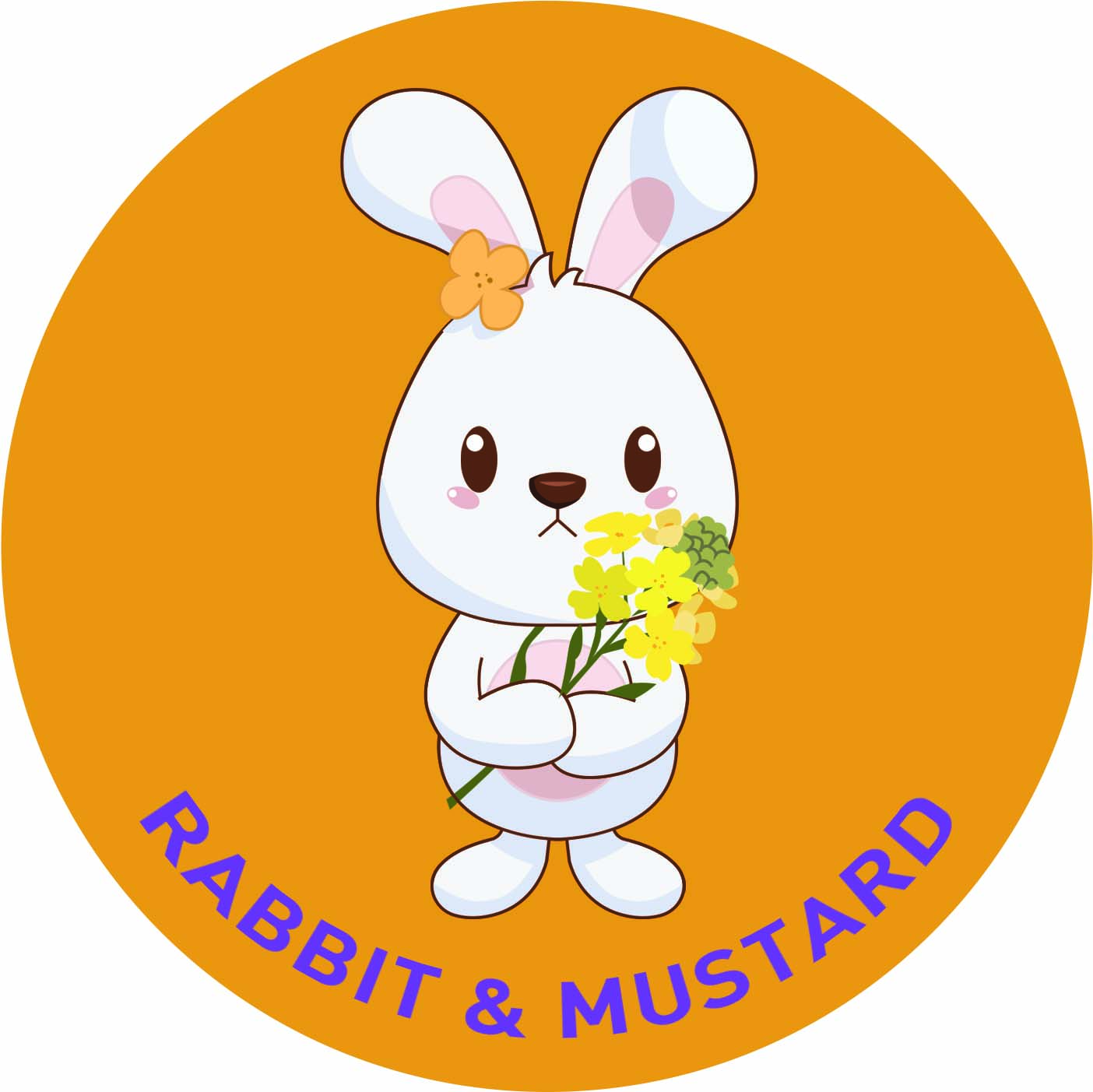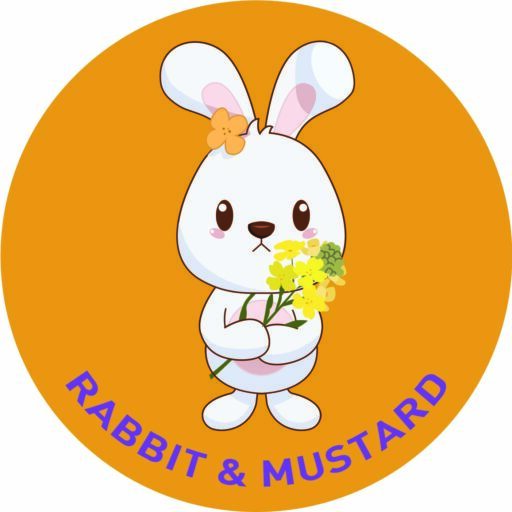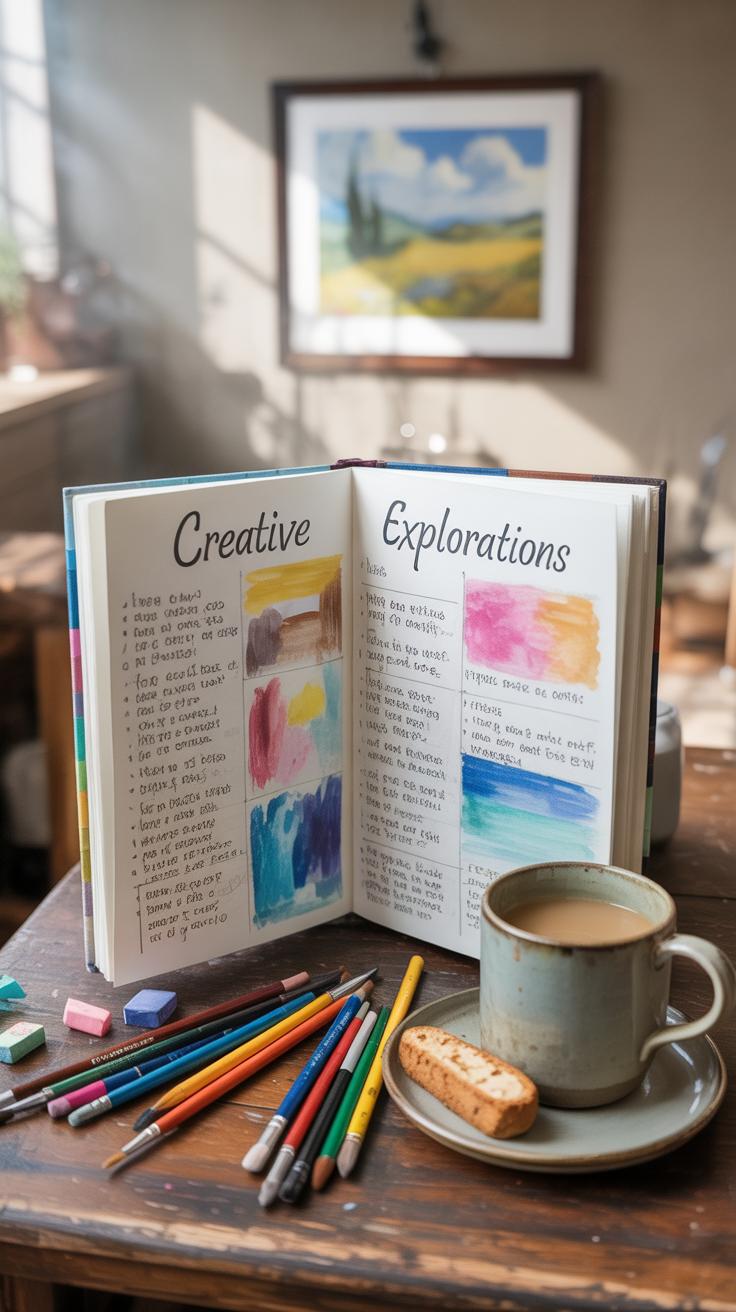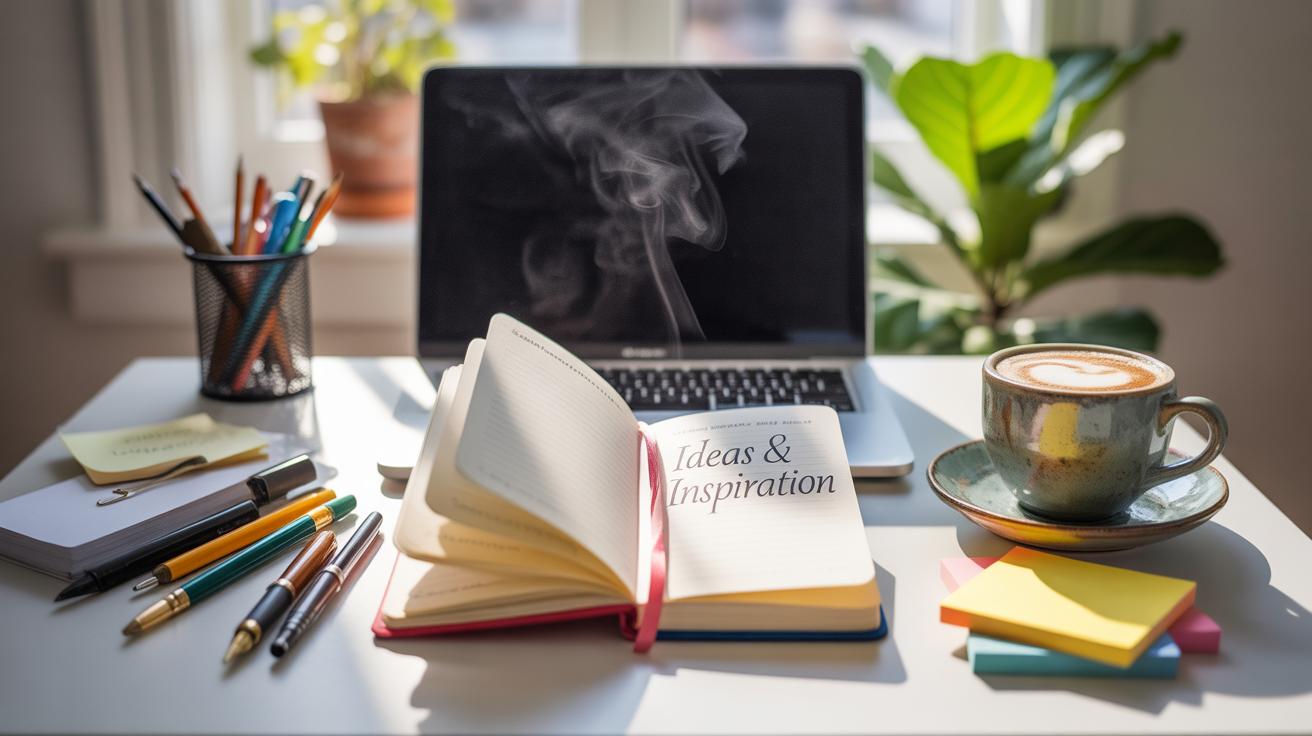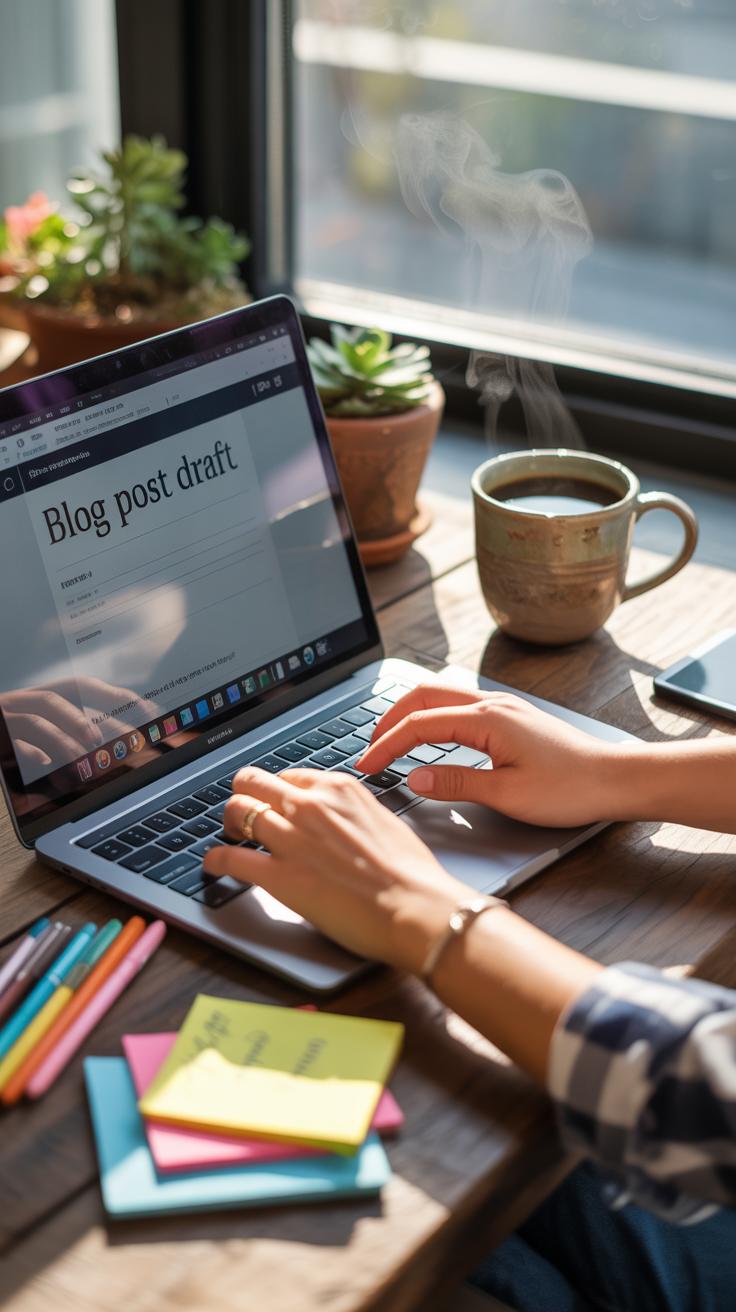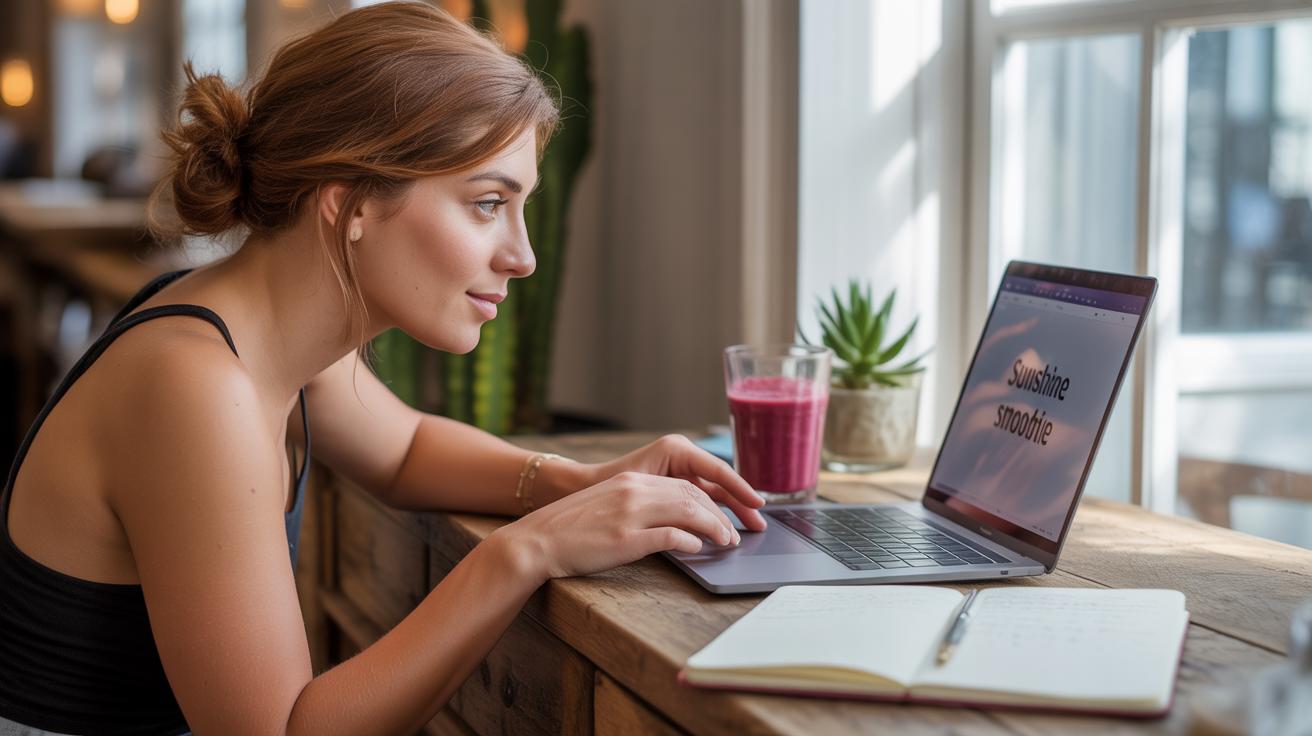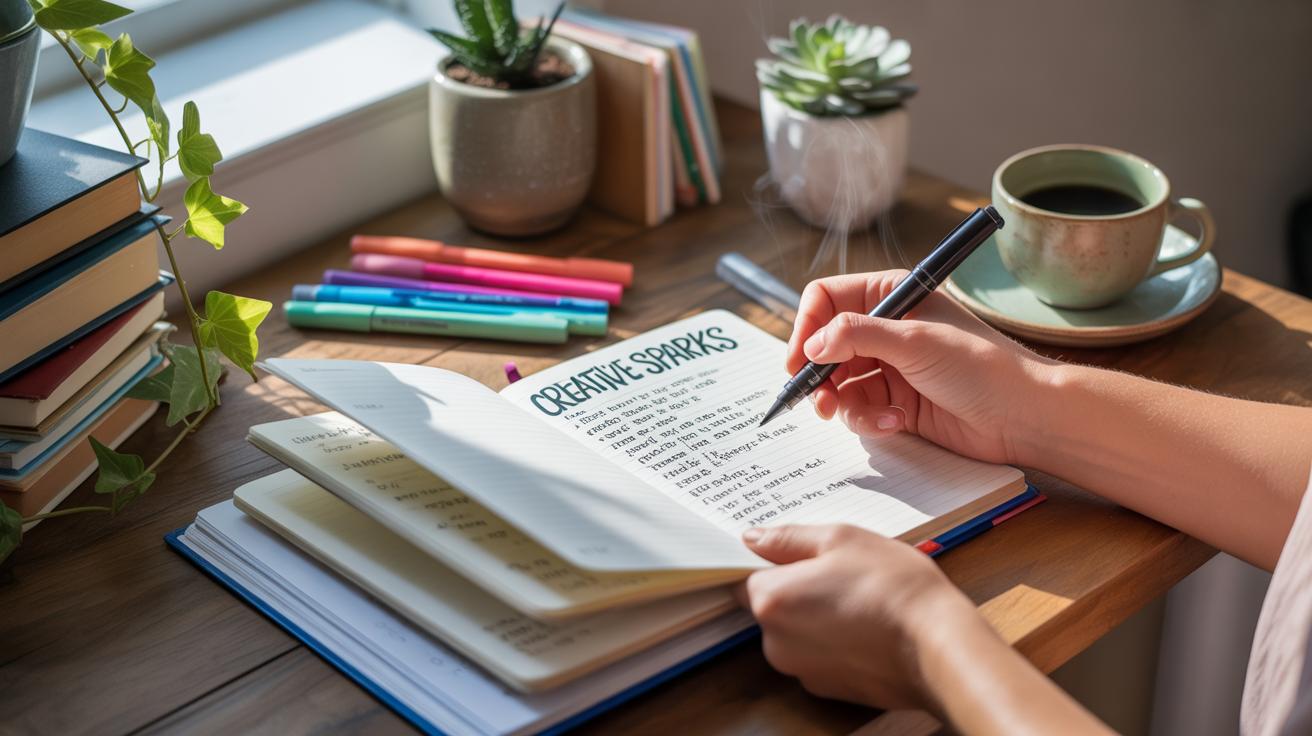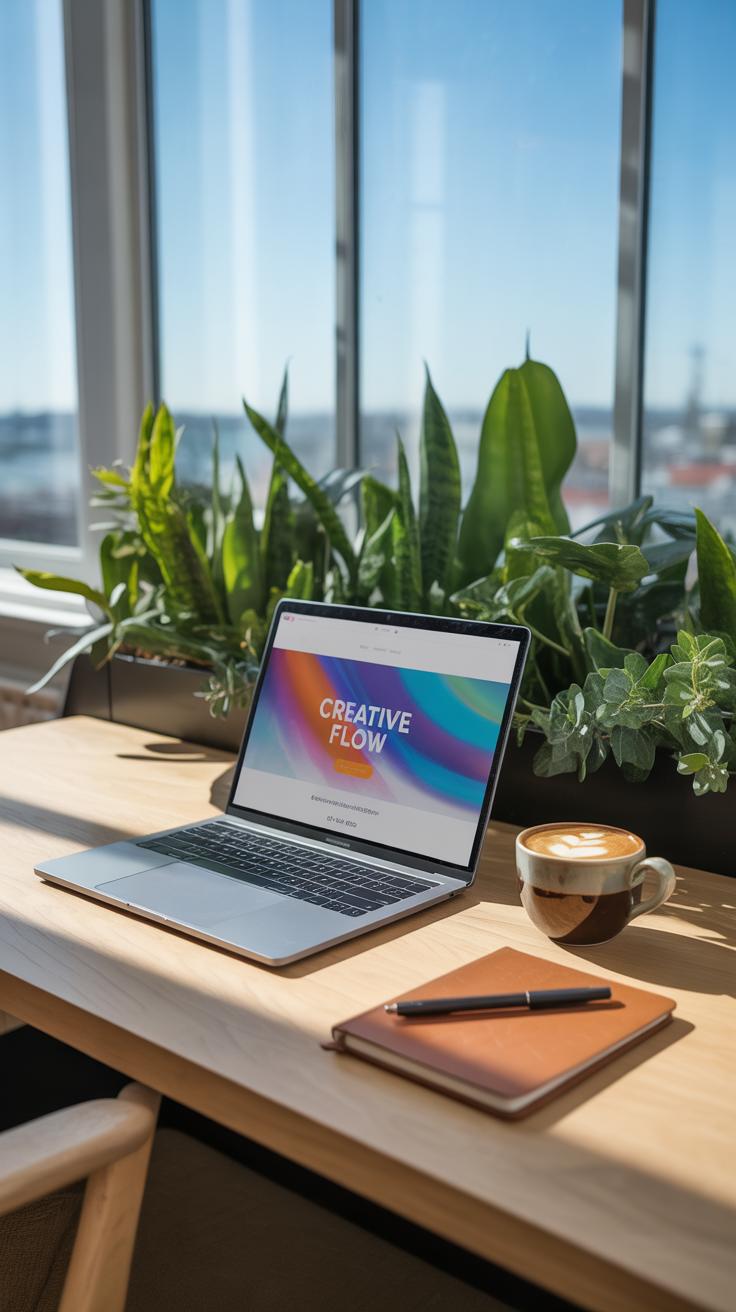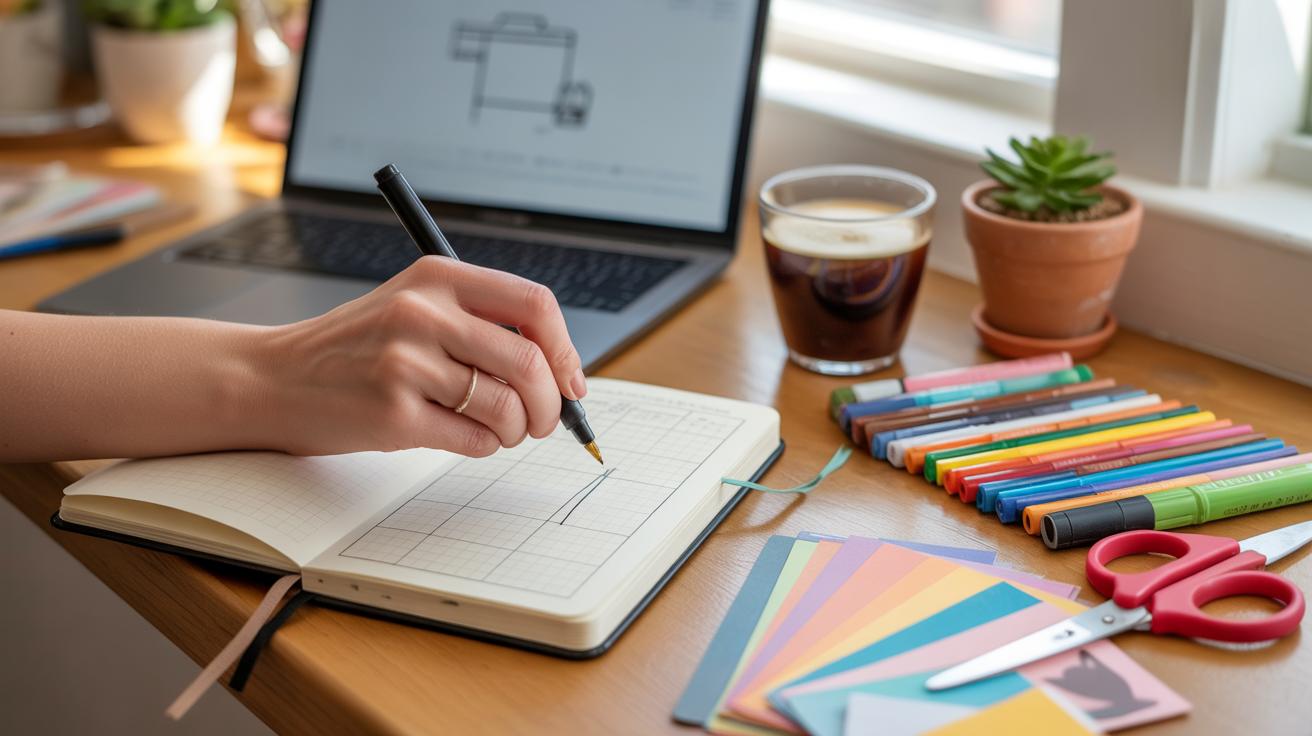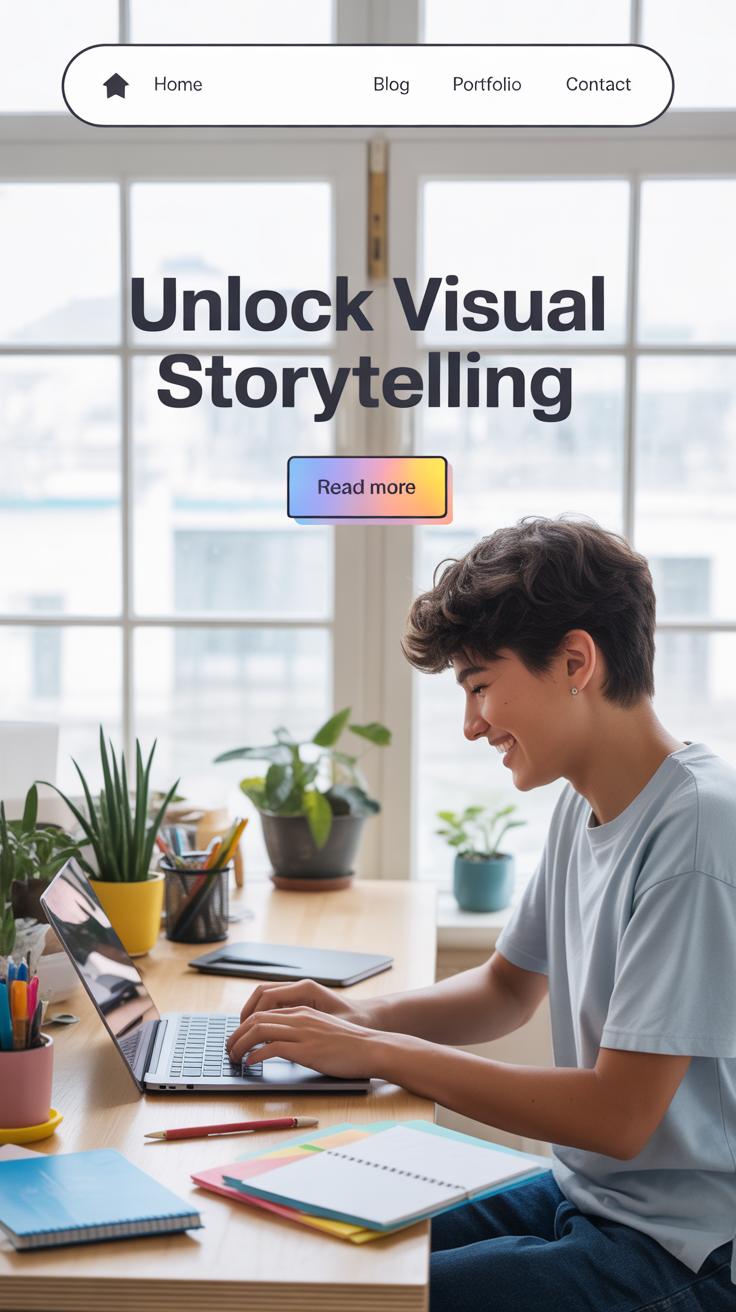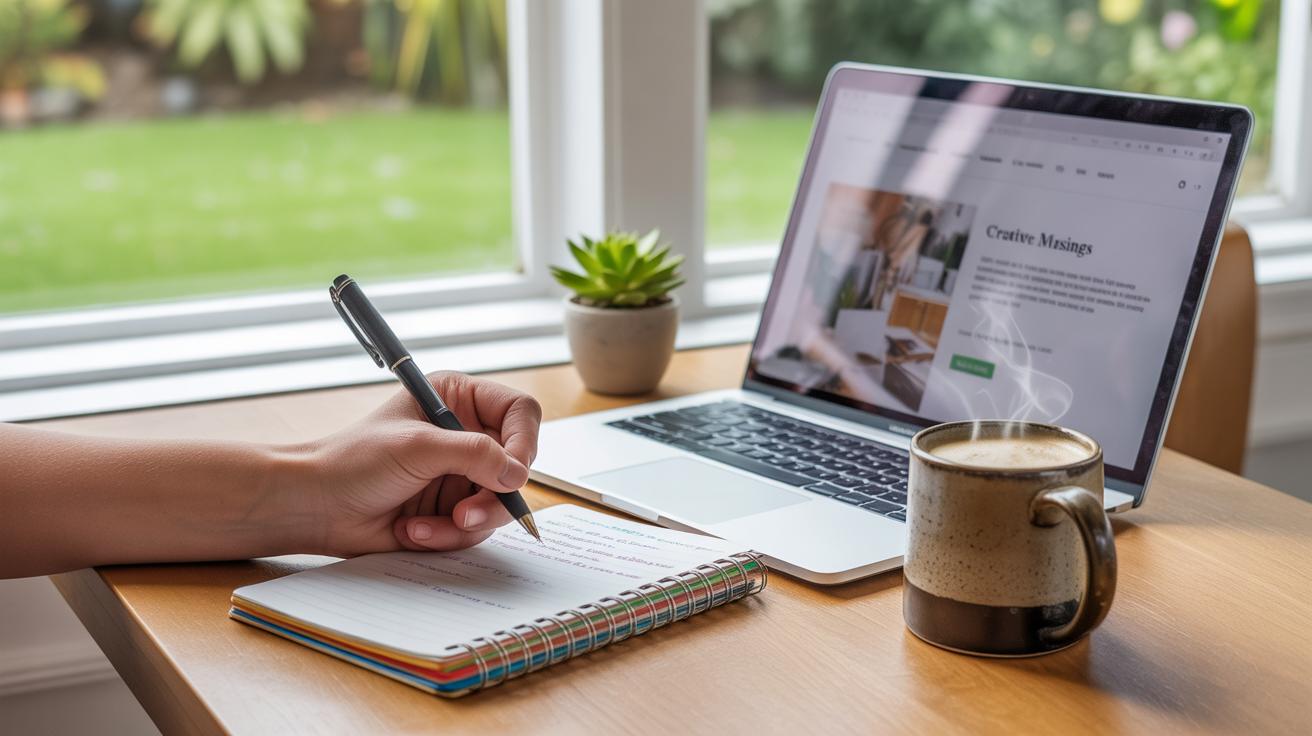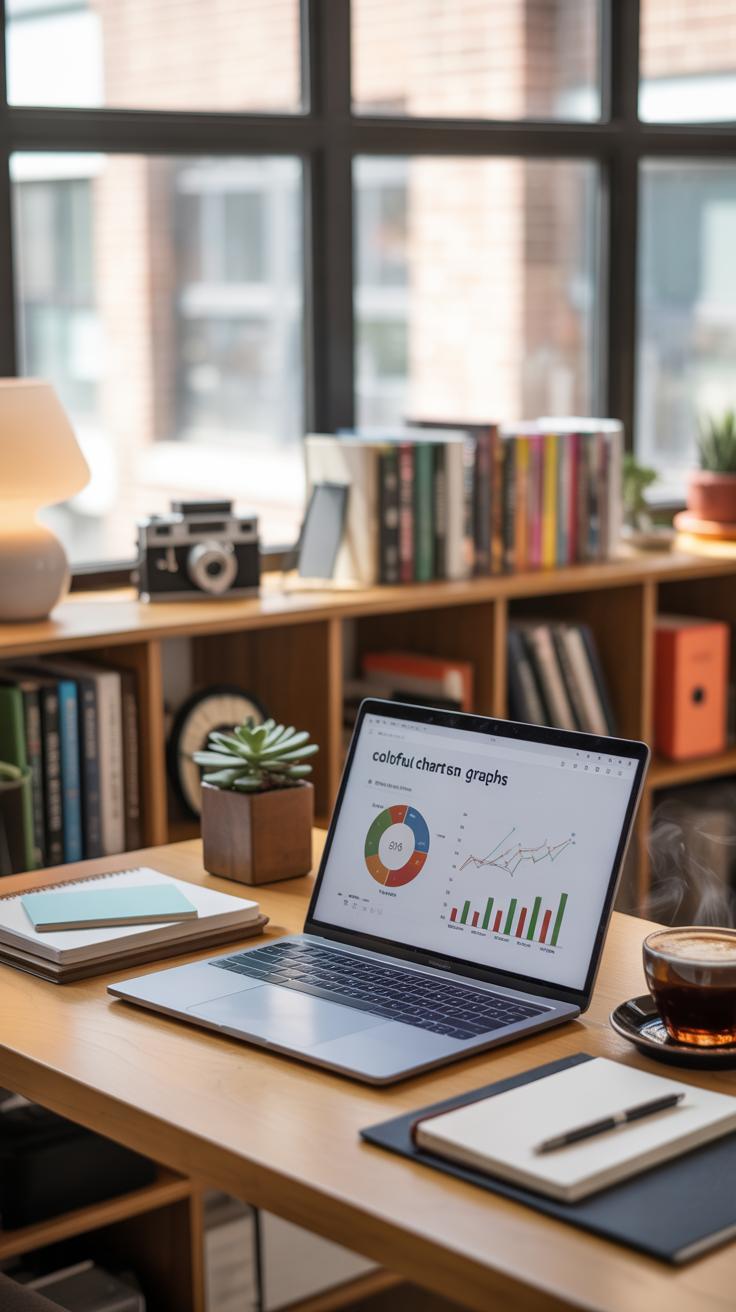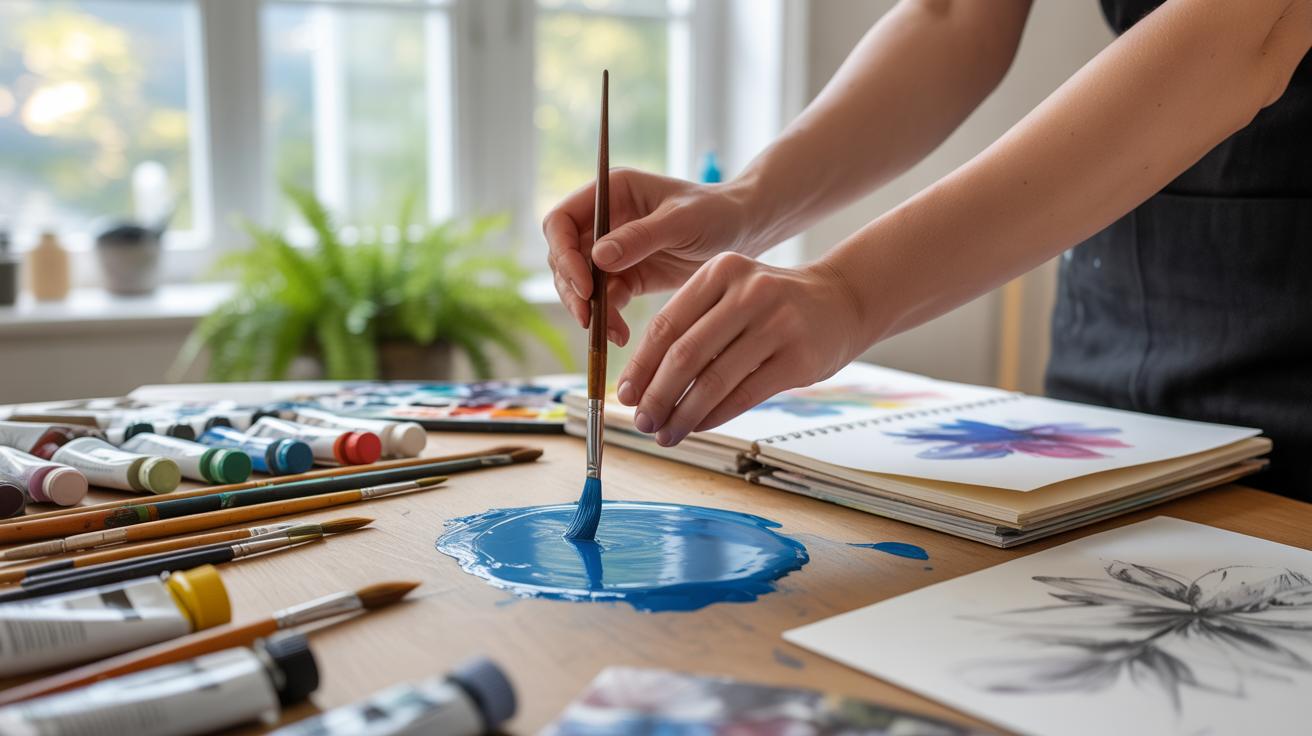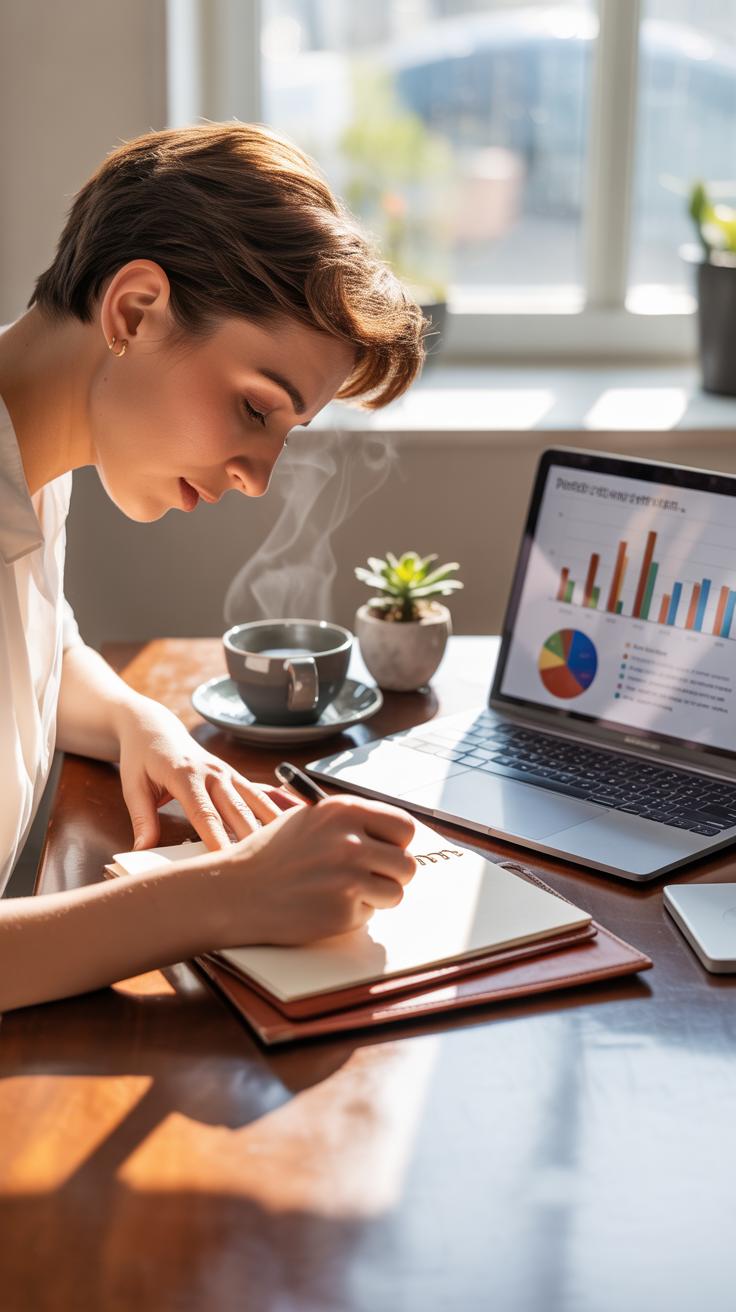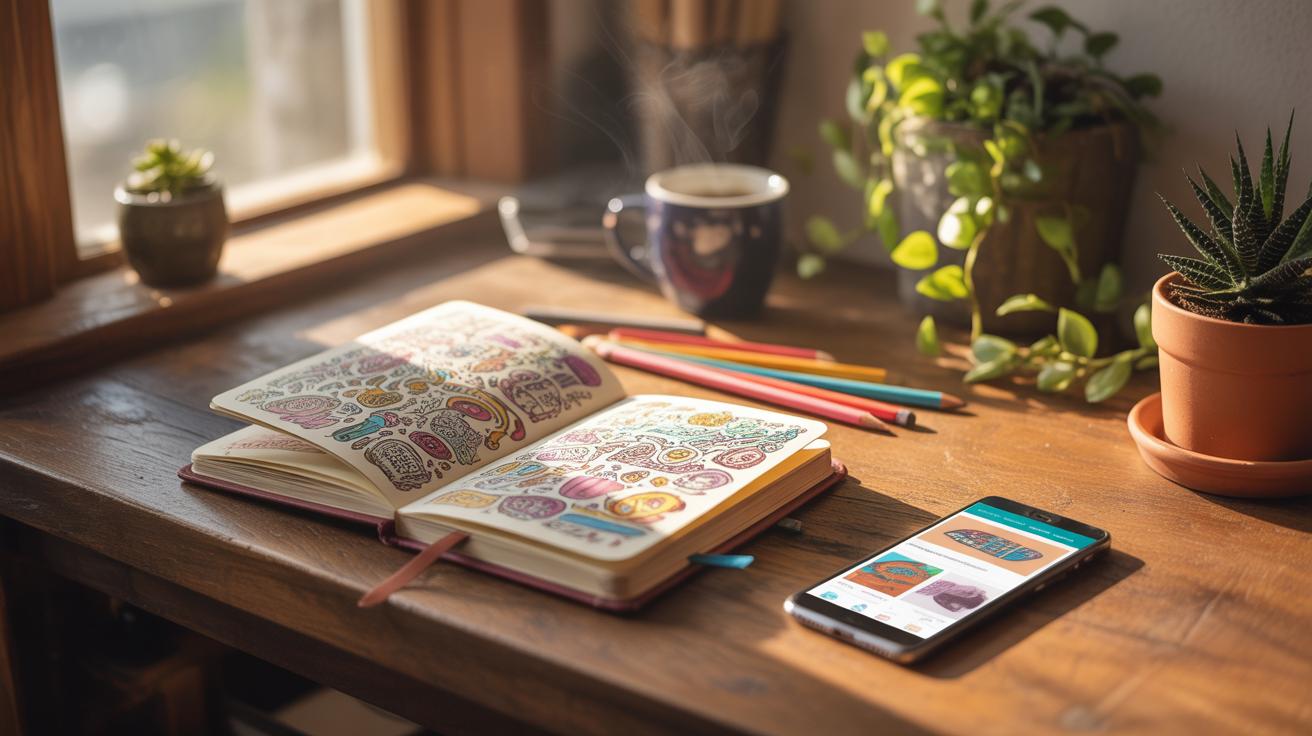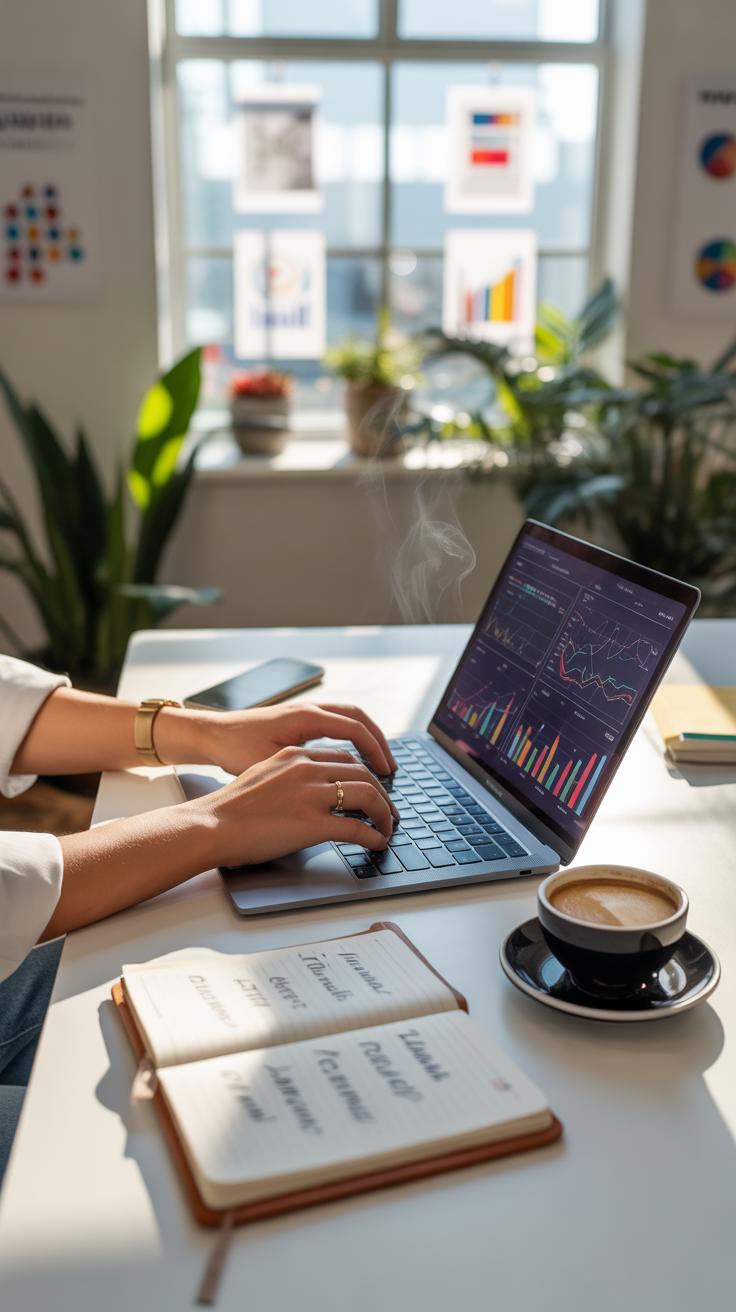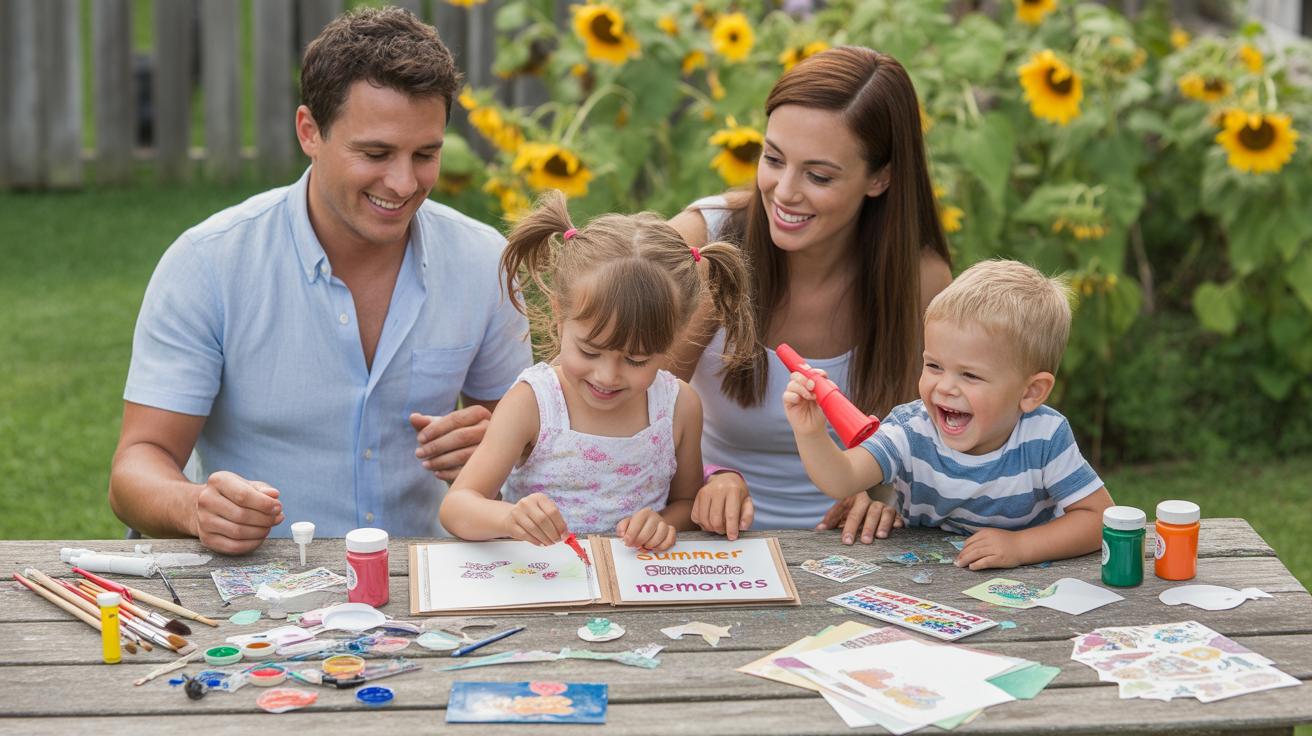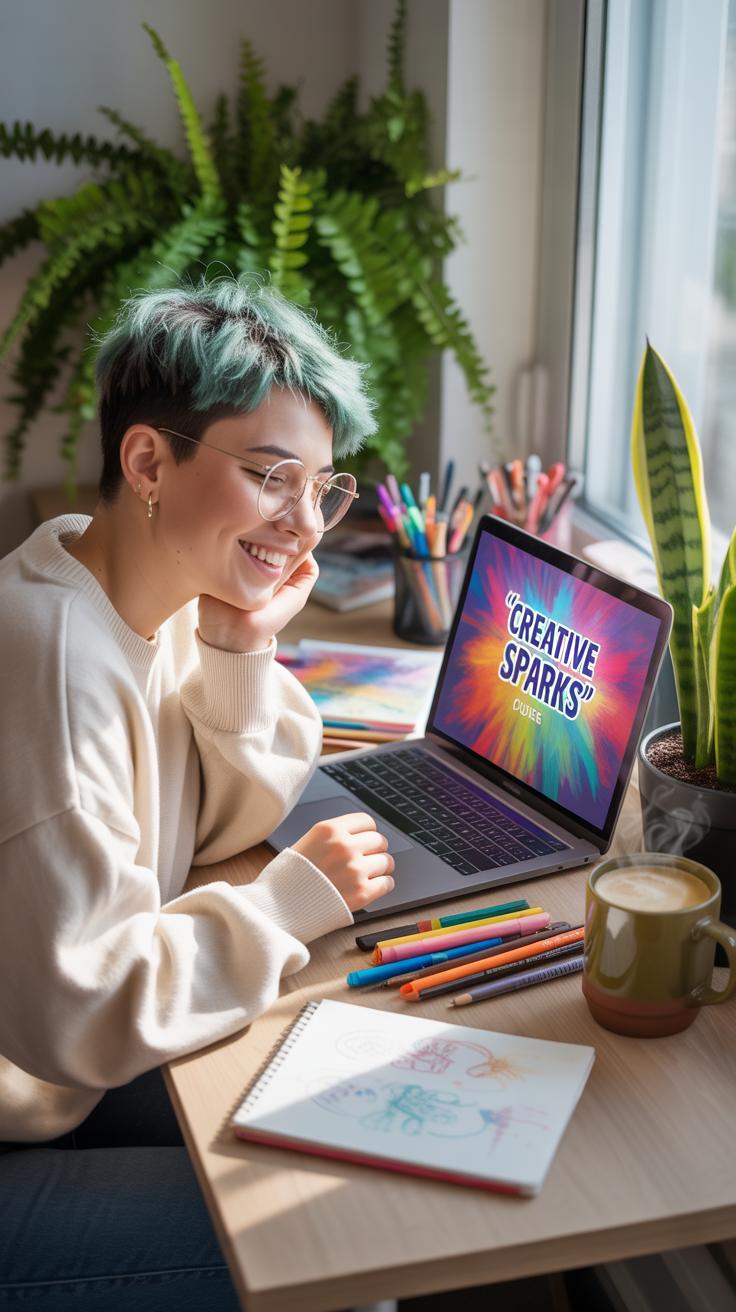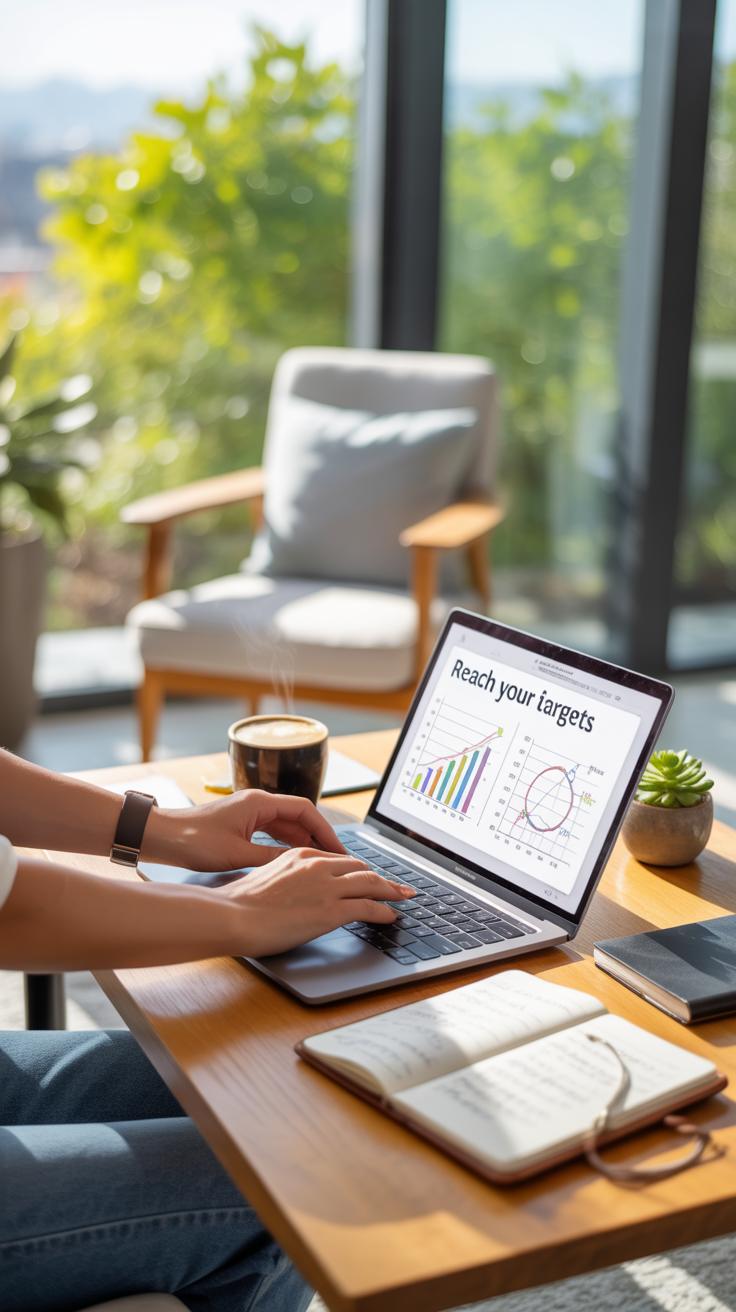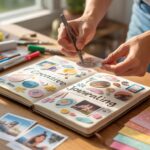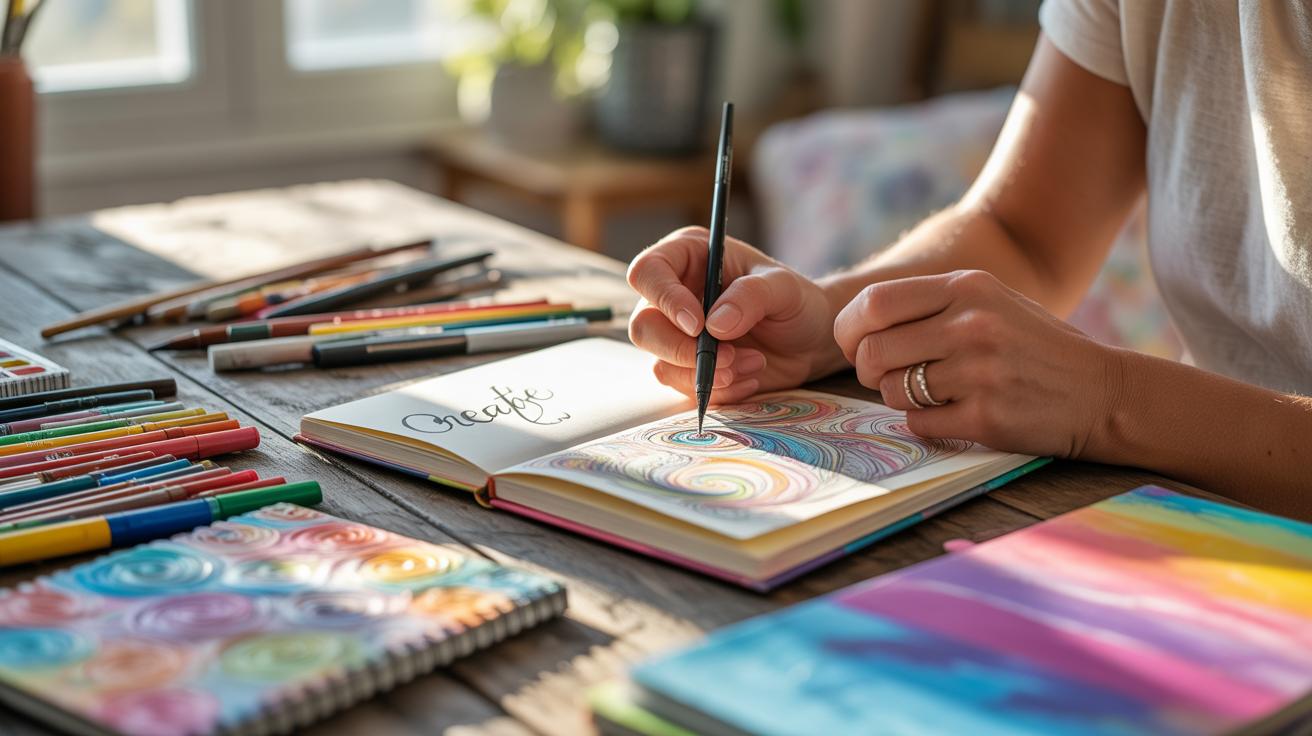
Art Journal Ideas for Your Creative Expression Every Day
Introduction
Art journaling combines creativity and daily expression. It allows you to capture thoughts and feelings visually. By using your art journal every day, you create a personal space to explore and document your artistic journey.
In this article, you will find practical ideas to start or enrich your art journal practice. These ideas will help you develop your creative habit and express yourself freely. Each chapter guides you through different ways to keep your art journal inspiring and fun.
Start Your Art Journal
Picking the right journal to begin your art journey isn’t as complicated as it might seem. Think about what feels comfortable to carry and easy to use daily. Some folks prefer a smaller, pocket-sized journal—perfect for quick sketches or notes on the go; others might lean toward larger pages to give themselves more room to spread out their ideas. There’s no strict rule here. If you’re unsure, a medium-sized sketchbook with thick, quality paper usually covers most needs.
When it comes to tools, you don’t need a whole art store. Starting simple often works best. A few pencils for sketching, some markers or pens for line work, and maybe a small set of paints if you want to add color without too much hassle. A glue stick or a roll of washi tape can open up possibilities, too. These basics let you experiment without feeling overwhelmed.
Setting a daily routine might sound like pressure, but it can be just a few minutes with your journal each day. Mornings, evenings, or whenever you feel inspired. The key is making this moment your own, a little space dedicated only to your creativity. It might be messy or calm; it’s about showing up—not achieving perfection.
Daily Creative Prompts
Keeping up with daily art journaling can feel tricky, but prompts make it easier—like little nudges to keep your hand moving. You might try something simple, like drawing a single leaf from your morning walk or sketching a small pattern in your journal that captures the weather outside. These little tasks don’t demand much time or pressure, but they do invite your creative mind to show up regularly. Over time, they form a habit that feels less like work and more like a quiet ritual.
Here are some prompt ideas that might work for you:
- Draw a shape you see in the clouds today. What does it remind you of?
- Capture an animal you notice nearby, even if just a bird or a curious squirrel.
- Illustrate how a storm feels—maybe the wind’s direction or rain patterns on your window.
- Sketch an emotion instead of an object. What lines or colors come to mind when you’re anxious or joyful?
- Write a few words or phrases to accompany your drawing, just enough to hint at your mood, not explain it fully.
These prompts aren’t rules; think of them more like invitations. Sometimes you’ll follow them exactly, other times you’ll drift off onto something different. That’s okay. The goal is to keep creating each day, even if just a bit.
Nature Inspired Ideas
Nature offers unlimited inspiration, and you don’t have to be outside all day to benefit from it. You can capture simple aspects—like the veins in a fallen leaf or the curve of a flower petal. When I first tried this, I was surprised how much complexity a single leaf held when I looked closely.
Try these ideas:
- Press a leaf or flower into your journal and sketch around it.
- Illustrate the way shadows fall on a tree trunk in your backyard or park.
- Draw raindrops on a window or the frost on a windowpane.
- Observe an insect or small critter and attempt a quick portrait—details can be rough.
By focusing on these small moments in nature, you may find your attention sharpening. It’s almost like you’re training your eye to notice more, which eventually feeds into your creativity.
Emotional Expression Prompts
Sometimes, your art journal is less about what you see and more about what you feel. Translating feelings into images can help you process them—or just make them less heavy. You could try representing your current mood with abstract lines or colors, instead of literal drawings. For example, scribbled jagged lines might capture frustration, while soft curves might show calm.
Here are a few things to try:
- Sketch your mood using only shapes, no words.
- Pick a color that matches how you feel today and see where it leads you.
- Draw a symbol for emotions you find hard to name.
- Create a mini comic strip about a personal challenge or a joy you experienced recently.
Sometimes you’ll find these prompts stirring something unexpected—maybe a color you didn’t know you liked or a pattern that feels soothing. It’s worth it to keep experimenting to find what works for you, even if it feels awkward at first.
Use Colors and Patterns
Colors and patterns have a surprising way of shaping your art journal. They draw the eye, set a mood, and even tell a story without words. When you pick colors, you’re not just filling space—you’re expressing feelings, sometimes more than you realize. Have you ever noticed how a certain shade calms you while another sparks energy? Playing around with these effects can give your pages an unexpected edge.
Let’s touch on the basics: color theory. You’ve got primary colors—red, blue, and yellow. They’re like your building blocks. Mixing these creates secondary colors like green, orange, and purple. What’s fun is how blending colors changes moods. A deep blue can feel quiet and serious, but mix in some red and it becomes richer, warmer, maybe even unsettling. This kind of mixing invites you to experiment, not stress about getting it “right.”
When you blend colors, try using little pools on a palette or directly on your page. Watch how they shift and settle. It’s not always predictable, which can be a bit thrilling. Sometimes the mix surprises you into a shade you didn’t expect but actually love. It’s almost like colors have their own minds.
Patterns might seem simple, but they bring energy to journal pages. Stripes, dots, zigzags—they can frame your drawings or give empty space a bit of personality. Don’t think patterns need to be perfect or symmetrical. Hand-drawn lines that wobble or dots that scatter unevenly can bring charm. Sometimes I prefer a random cluster of small dots instead of a neat grid—it feels more alive that way.
Consider this when filling a blank page:
- Use stripes to guide the viewer’s attention or divide sections.
- Dots can add playfulness or texture.
- Layer patterns over colors to add depth or contrast.
What colors or patterns make you pause and look twice? Exploring those might open new doors for your own art journaling style.
Incorporate Words and Letters
Adding words to your art journal can open new layers of meaning. Poetry, quotes, or even personal thoughts don’t just sit beside the visuals—they interact with them, creating a richer story. Sometimes, a few handwritten lines capture an emotion that paint or patterns alone might miss. I find that pairing a favorite quote with a sketch, for instance, encourages me to think deeper about what I’m expressing.
Simple hand lettering can make those words stand out without needing advanced skills. Try starting with basic strokes like upstrokes and downstrokes, or practice writing your favorite phrases with slight variations in thickness. It’s okay if your letters aren’t perfect—sometimes the imperfections add character that feels more authentic.
Consider pairing your visuals with writing prompts such as:
- Daily reflections on how you’re feeling or what inspires you.
- Short gratitude lists to ground your mood.
- Quotes that resonate and spark new ideas.
These can serve as anchors for your page. When you feel stuck visually, writing a simple sentence might just unlock the next creative step. Have you ever noticed how the right quote can shift your entire outlook? That’s why these words matter—they’re part of the art, not just an add-on.
Try Mixed Media Techniques
Mixing different materials in your art journal can open up new ways to express yourself. Using things like magazine cutouts, photos, and fabric scraps lets you play with texture and contrast. You might glue down a torn piece of an old book page, then layer a strip of cloth over it, adding bits of images that catch your eye. This creates a tactile surface that invites closer look—and touch, if you want to get involved fully.
Collage doesn’t need to feel planned or perfect. Sometimes, the most interesting pages come from random bits you’ve collected. Maybe that photo stirs a memory. Or a fabric scrap brings in an unexpected softness against sharp paper edges. Try arranging and rearranging pieces before sticking anything down. Let your instincts guide what goes where, even if it feels a bit messy or unfinished. That’s part of the charm.
Painting over paper elements adds yet another layer of depth. You could swipe some acrylic paint over glued-down scraps, partially obscuring them. Or maybe use a dry brush to leave subtle marks that peek through. This layering builds complexity and makes your pages feel alive. You might not always want to cover everything—it’s about balance, or maybe seeing what happens if you don’t have control. Sometimes those paint layers can overwhelm, yes, but they also can surprise you.
What materials do you have around you that could add texture and meaning to your art journal? Trying mixed media means letting go of precision and embracing unpredictability. It can be messy, unsure, but rewarding in its quirks.
Use Art for Mindfulness
Art journaling can be more than just making pretty pages. It can serve as a mindful activity that gently pulls your attention into the present moment. When stress builds up during the day, opening your journal and making deliberate marks can offer a quiet pause. It’s a way to anchor yourself rather than get lost in worries. You might find that your mind slows down naturally as you focus on simple shapes or colors. And that slowing down often helps you feel calmer, even if just for a little while.
Meditative Drawing
Try exercises like drawing mandalas or repeating basic shapes. These patterns don’t need to be perfect—actually, imperfection helps here. The act of repeating circles, triangles, or wavy lines draws your focus inward. I’ve noticed that even a few minutes of this can ease a busy mind. It almost works like a reset button. You don’t have to plan the design beforehand; the process itself is what matters. If mandalas feel too complicated, consider simple doodles or looping lines that unfold naturally on the page.
Reflective Art
Using your art journal to reflect on the day or your feelings offers a calm way to process thoughts. Instead of writing everything out, sometimes colors, shapes, or textures say more than words ever could. You might use darker shades to represent frustration or light, scattered strokes to show moments of joy. It’s okay if the images seem vague or unfinished. Those ambiguities can mirror your state of mind, creating space for deeper understanding. When you look back later, you might see patterns emerging that weren’t obvious in the moment.
Document Your Growth
Tracking your artistic progress through your journal can be surprisingly revealing. When you create regular entries and later look back, patterns emerge—sometimes expected, sometimes not. You might notice skills sharpening or ideas shifting in unexpected ways.
One practical way to observe growth is by making before and after pages. Pick a drawing or concept from months ago, then redo it with your current skill set. Seeing these side by side isn’t just satisfying, it creates a visual timeline of your journey. Sometimes the difference is clear; other times, it’s subtle but meaningful.
Also, try writing down your creative goals. Maybe you want to master shading or work with new materials. Mark milestones as you hit them, no matter how small. These notes don’t just track progress—they can nudge you forward when motivation dips. What did you struggle with last month? What feels easier now? Jotting these things down helps you stay connected to the bigger picture.
Have you ever surprised yourself by how much you’ve changed? Your art journal can show you that—even on days you feel stuck.
Personalize Your Journal
Making your art journal truly your own doesn’t stop at what you put inside. The outside and the little details matter just as much. Think about your journal cover. You can start with a plain notebook and then add fabric glued on, or paint it with acrylics for a bold statement. Fabric covers add texture and a softness that feels nice to hold. You might sew on patches or stitch a simple design if you’re feeling a bit crafty—or even just glue on scraps of paper, leaves, or old photos. Each choice says something about you, even before you flip the first page.
Then, consider page tabs to break up your journal. They’re not just practical, but fun to create. Use washi tape folded over edges or cut cardstock into shapes—flags, circles, whatever catches your eye. Write on the tabs, too; it can be a word, a symbol, or a date. Bookmarks made from ribbons or strings slipped between pages make you want to dive back in. These little additions can make your art journal easier to navigate and reflect how you work. Maybe you don’t mind a bit of disorder, or maybe tidy sections help you think. Feel free to experiment and change your setup as you evolve.
Share and Inspire Others
Showing your art journal to others, whether friends or online communities, can open up a whole new perspective on your creative work. Sometimes, you might feel stuck or unsure about a page, and getting a fresh view can kickstart new ideas or simply boost your confidence. Feedback isn’t always about praise; thoughtful critique can help you grow, even if it’s only one person sharing a unique insight you hadn’t considered. Plus, encouragement from others feels surprisingly motivating—it makes the time you spend creating feel shared and valued.
When you decide to share, you might hesitate, wondering if your work is “good enough.” That’s completely normal. The truth is, everyone’s journal is unique, and others often appreciate sincerity and experimentation more than technical perfection. So, don’t worry about showing unfinished pages or imperfect sketches. Sometimes, those are the most inspiring parts for others.
Social Media Sharing
Posting your journal photos online can connect you with artists worldwide, but it’s worth thinking about what you want to share and how. You could choose selective pages or close-ups—details that highlight what you love about the piece. When sharing, try to use platforms with creative groups focused on art journaling or mixed media. Those spaces tend to be more supportive and offer useful tips.
- Keep personal details minimal; it’s okay to be cautious about privacy.
- Watermarking photos can protect your work without making your image overwhelming.
- Describe your process or challenges in captions; it invites more meaningful conversations.
Online, you’ll find people offering ideas you hadn’t thought about. But sometimes, the amount of feedback can feel overwhelming or even distracting. If that happens, it’s perfectly fine to take breaks or limit interactions to just a few trusted groups.
Group Journaling
Joining or starting a group can make art journaling feel less solitary. Group settings, whether local or virtual, provide a regular space to share work, swap supplies, or try new techniques together. I think there’s a certain energy in hearing others talk through their pages—it often sparks your own creativity in unexpected ways.
- You might find a local meetup through community centers or libraries.
- Online forums and video calls can connect people who are far apart but share your passion.
- Try organizing themed sessions or challenges within the group to keep things fresh.
That said, groups aren’t for everyone. Some days you want quiet time with your journal without outside opinions. But when you feel ready, having others alongside you can make the process richer and more engaging.
Keep Your Journal Going
Staying consistent with your art journal can feel tricky, especially when enthusiasm wanes or ideas dry up. One way to keep momentum is by setting small, manageable goals. These don’t need to be anything grand—perhaps just a simple sketch or a splash of color each day. Or maybe a weekly theme you revisit. The key is to create tiny habits that feel doable, rather than overwhelming.
When your creativity stalls, it might help to shake things up. Try using a different medium, like switching from pen to watercolor. Or explore a new style that feels unfamiliar to you. This change can spark fresh ideas and break the monotony.
You might notice that some days you want to follow the rules and others you don’t. That’s okay. Sometimes pushing through a slump means doing less, not more. So, ask yourself: what’s realistically possible today? And if that means experimenting with scraps of paper or doodling with your non-dominant hand, that counts too.
Remember, art journaling isn’t about perfection or finishing big projects. It’s about showing up, bit by bit, even if that means changing directions or slowing down now and then.
Conclusions
Using an art journal daily boosts your creativity and helps you express emotions. The ideas shared in this article provide simple steps to keep your art journal fresh and meaningful. You don’t need to aim for perfection—just enjoy the process of creating every day.
Try different techniques, materials, and prompts. Your art journal can become your best creative friend, helping you reflect and grow. Start today and watch your artistic expression flourish one page at a time.
